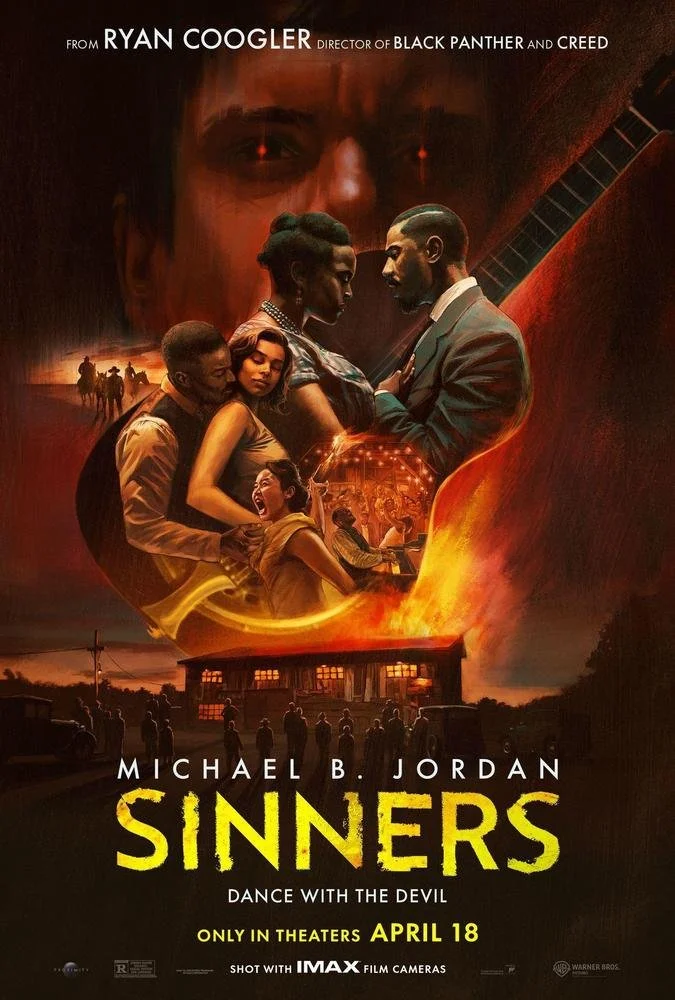We love when good horror fills the theater & we go there together. But will we make it through the night? Today’s Friday Feature is Sinners. Published May 2, 2025.
Sinners (2025)
Dear reader: Please watch Sinners before you read this. We’ll wait right here if you haven’t seen it yet, and if you hurry you can catch it on a big screen with the pleasure of company. Along with discovering first-hand what the film has to show you, you’ll have context for all the things we don’t talk about here that are remarkable about this film, including so many fantastic performances. We focus on a couple points we want to make—in full recognition of the rich and varied discourse out there, and in mind of all the other things we have to say about it—and of course the film can’t work as well as it does without the accomplishments of its full cast and crew.
Films don’t have to pretend they aren’t pieced together from set pieces and incomplete scenes. If the arrangement is linear, we might lose track of the editing, but it still affects us. The art of film is there in the seams. We can easily find the set pieces in Sinners, and use them to map the film’s project. We can also locate its formal and generic precedents. We’ll mention two of them that work both ways (form and genre). First, the lesser: From Dusk Till Dawn (1996). The two films share structure, situational location, narrative concept: one story becoming another as we cross genres after dark and characters try to survive the night in a club. Therein is the greater precedent, the less incidental and more deeply considered. The more substantial foundation for Sinners is Night of the Living Dead (1968), and if the source is obscured in plain view along the way, it’s re-introduced in the film’s second ending, when Smoke takes on the Klan constabulary. Here we have a restaging of Ben’s confrontation at the end of Night of the Living Dead, when he is shot and carelessly disposed of, mistaken perhaps for the undead, but more explicitly treated like another dead Black body. Ryan Coogler and Michael B. Jordan do something different with the confrontation without lessening its impact as a conclusion—in the case of Sinners, one of several endings, which is also important to how the film works. Smoke may not survive being shot, but he gives us a taste of vengeance for Ben, and the casual lynching Ben’s death represents. Smoke may be dispatched, but he is not thrown away. The additional endings are made possible by the dignity with which Smoke passes.
Another way the film shows its hand is the scene in the juke when Sam is performing and time collapses around us. We are folded in, thanks to the cinematography, imagery, and sound design—see this in the theater if you can. In addition to the ways this moment creates a thematic crescendo for the film, it also functions as a formal crux that unhinges the film’s linearity. In doing so it emphasizes the film’s more typical gestures at nonlinearity—because linearity is arbitrary, it’s also an always-incomplete construction—like the opening of the film where we start at one ending and skip back one day in the storyline. What started as a conventional narrative rearrangement leads to something more than chronological rupture: we arrive at cinematic rapture. Five out of five sacs of blood.
—J †Johnson


